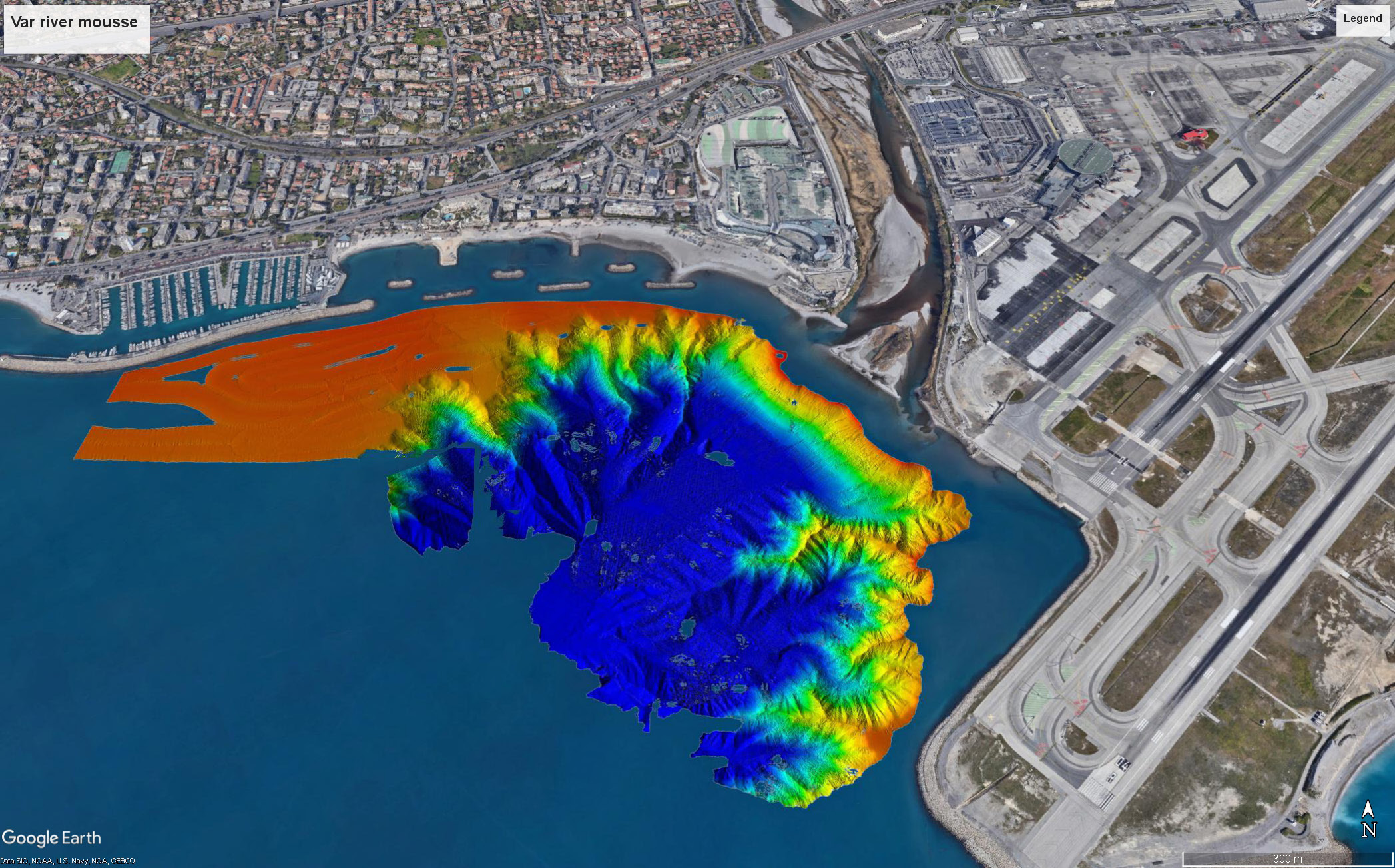
Teledyne France assists emergency responders with rescue efforts after damaging storm using the Teledyne RESON SeaBat T50.
In October 2020 a devastating storm hit parts of Europe including the southeast of France. Human lives were lost as heavy rains and flash floods ravaged the area de-stroying nearly 100 houses and leaving many others on the brink of ruin. The ground slides and heavy flooding created by the unusual meteorological event caused eco-nomic and infrastructural damage.
Not long after the storm hit, search and rescue operations were initiated. Emergency responders were quick to dispatch personnel to aid in the rescue and recovery of missing people. Search and rescue dive teams were deployed and began to make their way through storm debris and difficult conditions with low to no underwater visibility. Searching for those lost in the aftermath of Alex became the central role of their operations as time was running out.
Teledyne France was able to come to their aid with the Teledyne RESON SeaBat T50 multibeam echosounder. The SeaBat T50 multibeam sonar was dispatched from Teledyne RESON in Denmark to Teledyne France and deployed by a local dive team using a vessel from a neighboring dive organization.
The SeaBat T50 multibeam echosounder was utilized in a location not far from the mouth of the Var River. The sonar was the perfect tool to act as eyes for the dive team who were working in turbulent waters with zero visibility. The SeaBat T50 is de-signed for fast mobilization on smaller vessels, including unmanned surface vehicles, and is optimized for shallow water, making it the perfect instrument for search and rescue operations in demanding conditions. The multibeam echosounder’s ultra-high-resolution delivers clean survey data while reducing processing time and is a compact system requiring minimal space requirements.
Search and recovery missions are often time-sensitive and take place in challenging environments. Multibeam technology is proving increasingly critical to these mis-sions by providing rescuers with a clear image of the underwater environment re-gardless of the visibility. In this instance, the images and data produced by the sonar following this devastating storm provided the search and rescue team information to pinpoint the locations of interest to optimize search time, while also keeping the responders out of storm conditions that posed a threat to their safety. Local law en-forcement showed great interest in the technology and now include this information in their procedures to manage and mitigate risk during search and rescue maneuvers.
